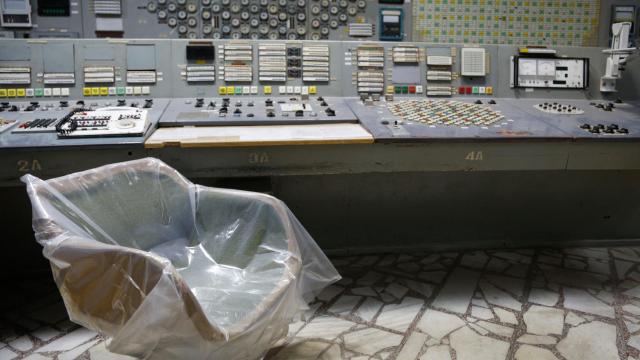Ukraine’s parliament said in a statement Monday that satellite imagery had revealed at least seven fires in the forested area around the Chernobyl nuclear power plant. These fires are within 10 kilometres of the defunct plant itself, making them particularly “dangerous,” according to the statement. The parliament said Ukraine firefighters have been unable to beat back the blazes due to Russian presence in the region.
The parliamentary statement blamed Russian shelling as a likely cause of the fires’ outbreak. Russian forces moved into the region around the power plant in early March and have occupied it since, forcing some staff to do their jobs for three weeks at gunpoint as hostages and stoking fears that important safety protocols will be neglected. On Wednesday, the Ukrainian government said that Russian forces had destroyed a lab at the site dedicated to monitoring radioactive waste.
Unfortunately, forest fires in Chernobyl aren’t a new phenomenon. The region last caught fire two years ago, when hot and dry temperatures helped a fire set by an arsonist spread. It took more than a week for firefighters to put out those April 2020 fires. They were among a wave of blazes that swept Eurasia, including parts of Siberia, amid soaring temperatures that spring.
Separate NASA imagery reviewed by experts who spoke to the Washington Post confirmed at least three fires burning in the area. Timothy Mousseau, a professor of biological sciences at the University of South Carolina, told the Post that it looked like at least one large fire had been burning for several days, probably fed by “dead organic matter” from previous fires; the fire, Mousseau said, did appear to be dying down.
After the deadly nuclear meltdown at the plant in 1986, hundreds of thousands of people living in the region fled or were resettled, and the government created a more than 2,600-square-kilometre exclusion zone around the plant. While portions of the exclusion zone have opened up to tourists and research inside the area is ongoing, it remains largely restricted to protect public health and to prevent contaminated materials from spreading. Nature has quickly returned to the exclusion zone, with lots of organic matter — including dead trees — available as wildfire fodder.
Any big disturbances in this exclusion zone can mean worrisome changes to radiation levels. During the 2020 fires, radiation levels in the exclusion zone were measured at 16 times normal and five times higher than maximum levels allowed by Ukrainian government standards. A 2016 study found that fires in 2015 sent radiation particles — albeit at very low levels — from Chernobyl across national borders toward Eastern Europe.
Fires and combat can also threaten the safe management of nuclear waste at the site. The 2020 fires got within 36.58 m of a waste storage facility. Experts have also expressed concern that unprotected fuel at the bottom of the defunct reactor could disturbed if fighting increases in the area or if radiation levels are not properly monitored.
“There is no data on the current state of radiation pollution of the exclusion zone’s environment, which makes it impossible to adequately respond to threats,” Energoatom, Ukraine’s nuclear company, said in a statement Monday, adding that forest fires in the spring and summer posed a particular threat. “Radiation levels in the exclusion zone and beyond, including not only Ukraine, but also other countries, could significantly worsen.”
